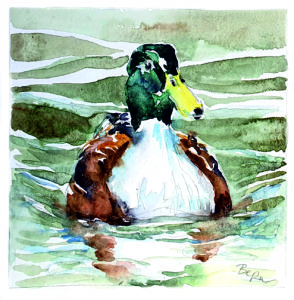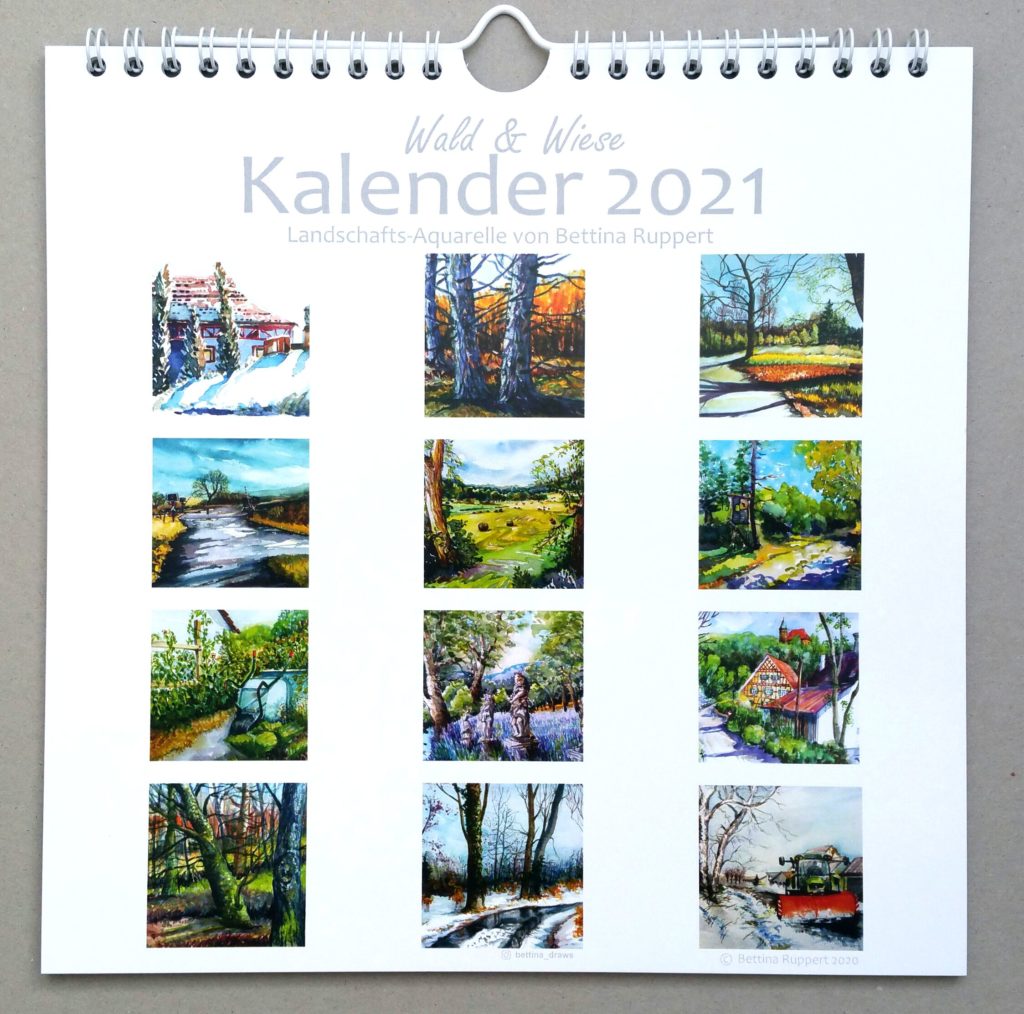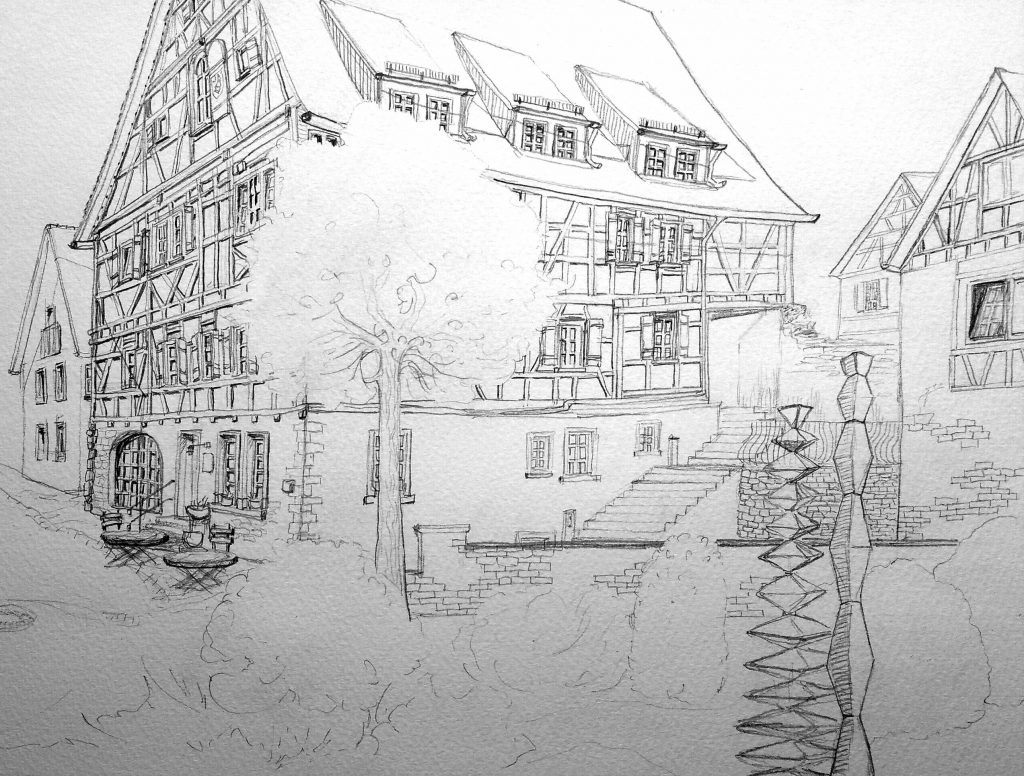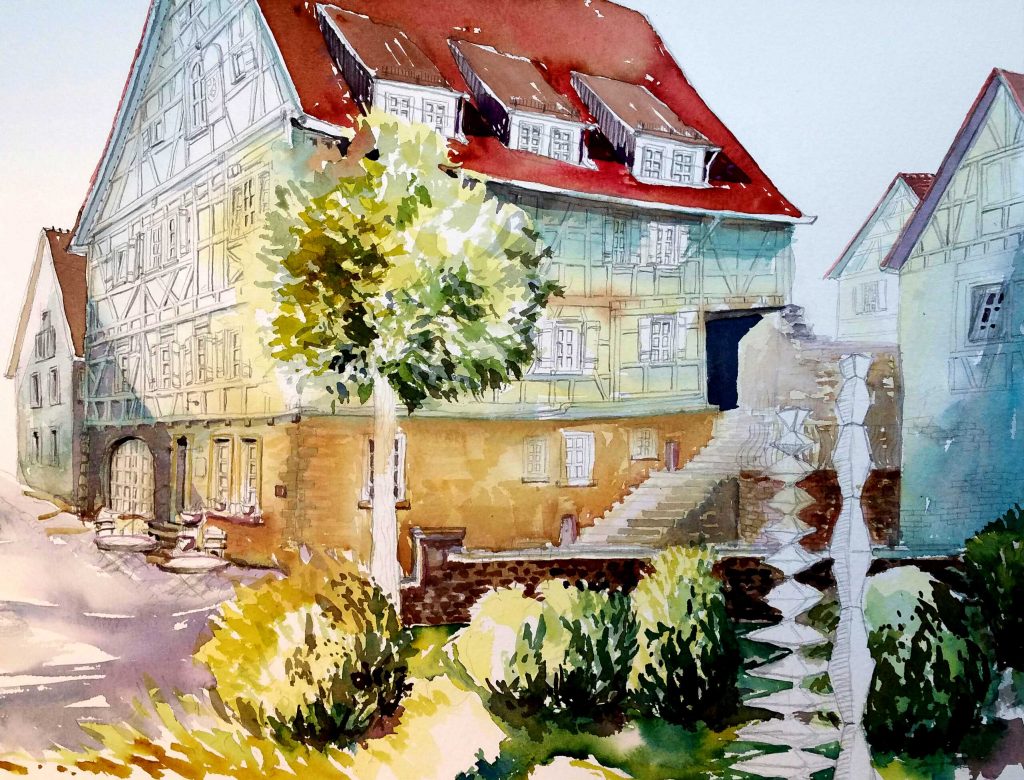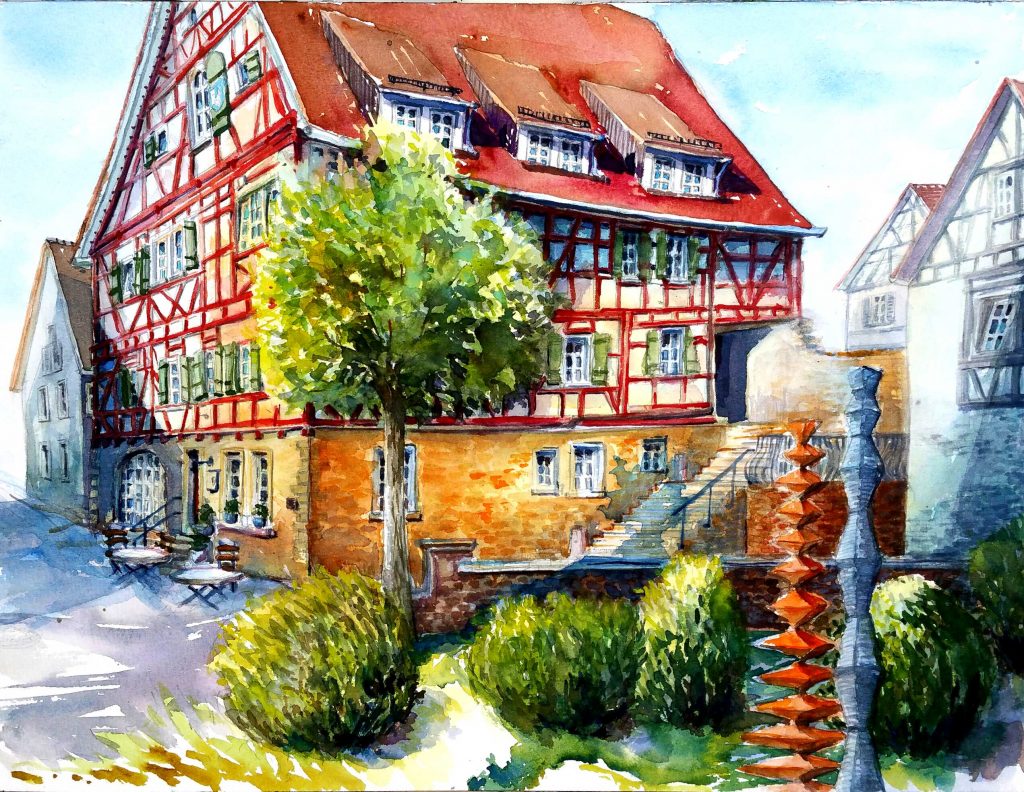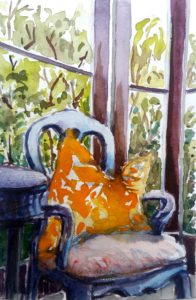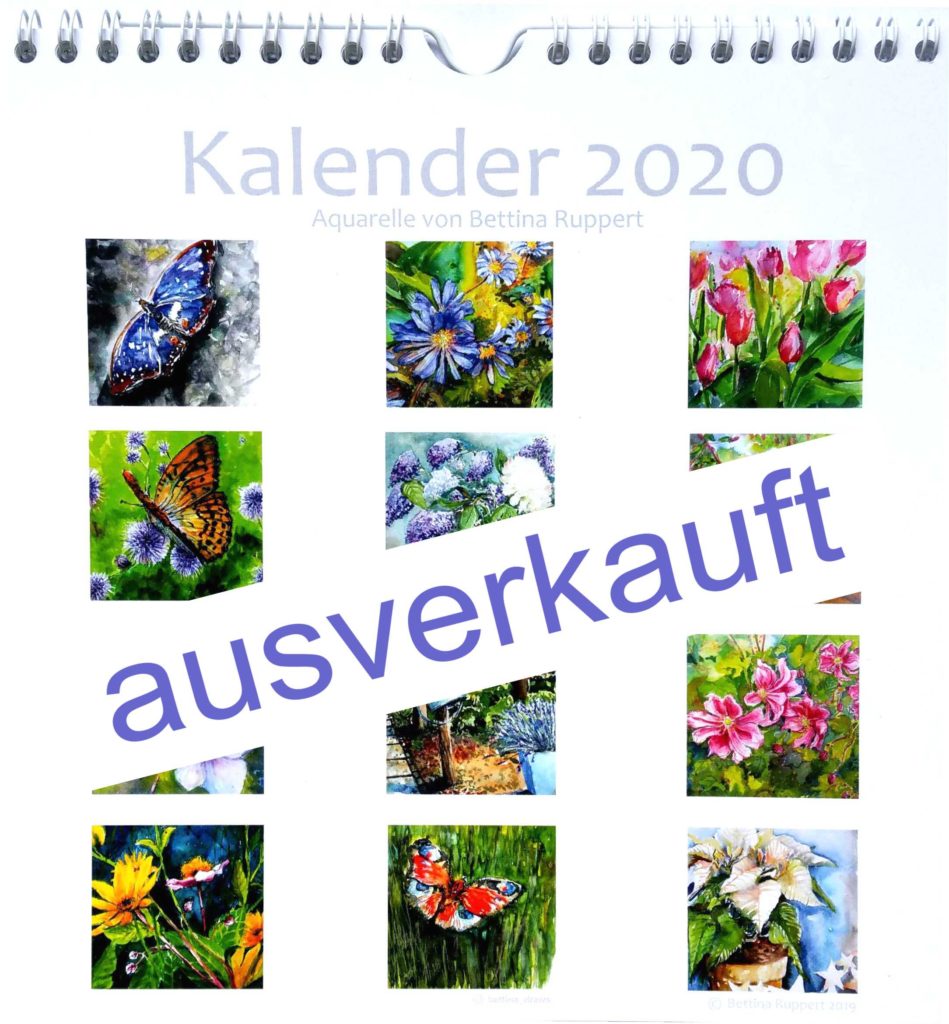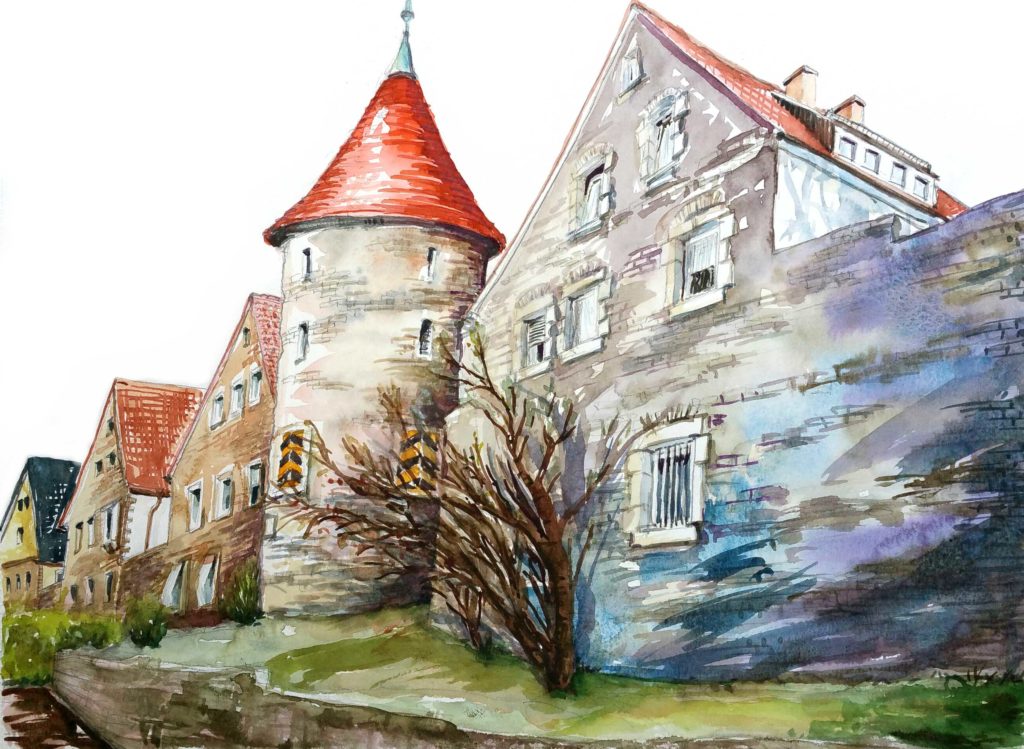
JAGST hike & paint / Intro
Let me introduce you to my 2021 project.
The JAGST is a river in Baden-Württemberg. It is the main river in my area of Hohenlohe and one of three largest rivers to flow into Neckar. It’s length is about 190 km which makes it the longest of the three side rivers to Neckar river.
The JAGST hike & paint is my aim to combine my love for nature and for painting in a perfect way. There will be themes that interest me like flora and fauna, the landscape, as well as the colours and movements of the water.
About once a week I will follow different stages, I will call „Etappe“ of the river by foot (starting point: Crailsheim, the endpoint is not yet set ).
The initial idea is that each walking tour will be around 2 – 3 km depending on the time available. I will need to have enough time to paint and sketch at different locations by Jagst river and the surroundings, so it could be that I paint more time than I hike…
I try to continue from about the point I ended the week before in order to get a full picture of the route. There will be a description of what I see, hear, smell, feel and paint and what I experienced along the way.
Not yet sure how long it will take, but for sure it will be a great adventure. Stay tuned for my updates of each part of the journey.
The plan is that a book and exhibition will follow.
Stay tuned weekly to get my story and update.
Yours Bettina
